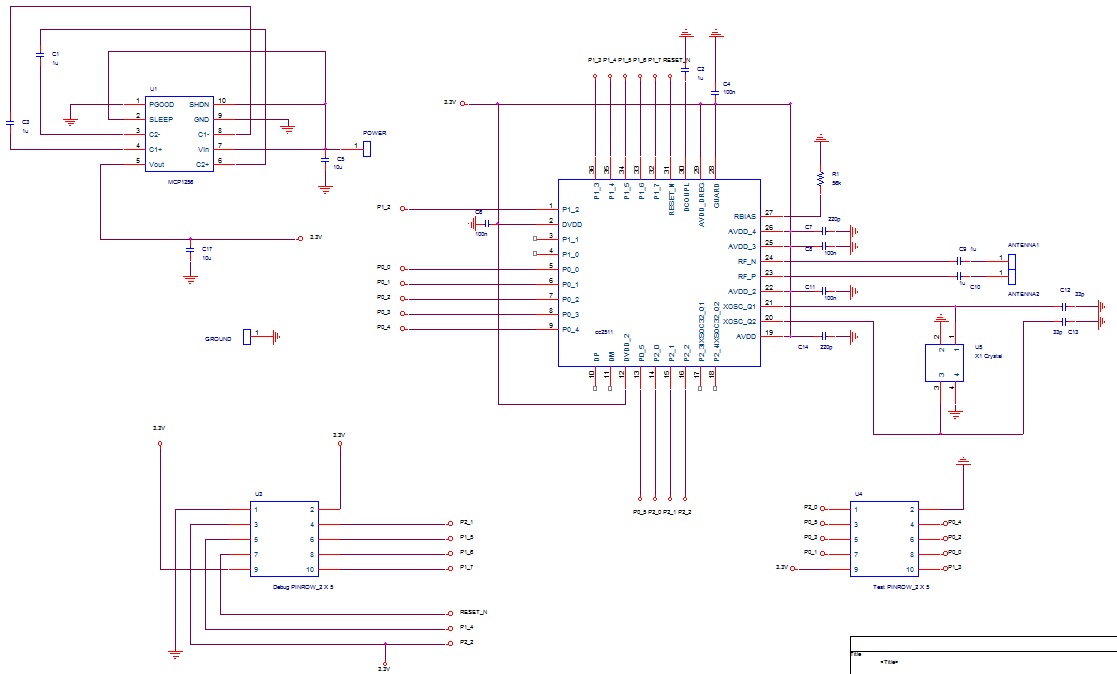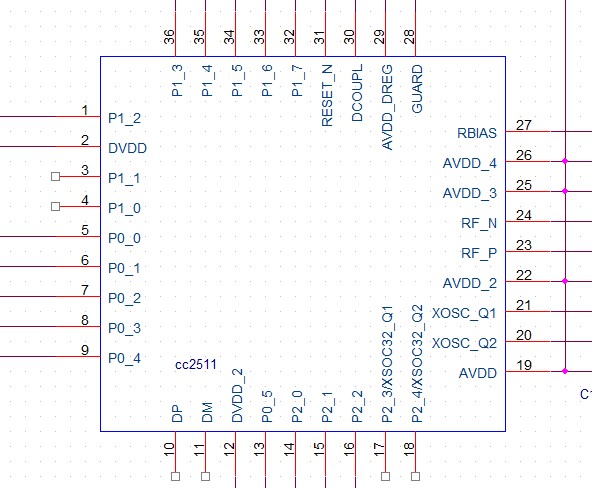Hi,
I have encountered a problem when doing my project using the CC2511 transceiver. I bought a CC2511 dongle and did some test on it. Then I designed my own circuit. Actually the schematic is almost the same as the dongle. The difference is that my board does not have a USB interface and I used an external loop antenna instead of the microstrip antenna. I powered my board up and tested every pin on the oscilloscope. The results (voltage, waveform...) are all the same as I tested the dongle. Which I think I designed my board correctly and I soldered every components well. But then comes the problem, my computer can not find the device. I connected the board through a CC Debugger to my computer. My computer recognized the CC Debugger but it can not find a RF device. What could possibly be the reason of this problem?
BTW the OS of my computer is Windows 7 64bit.
Thank you.





